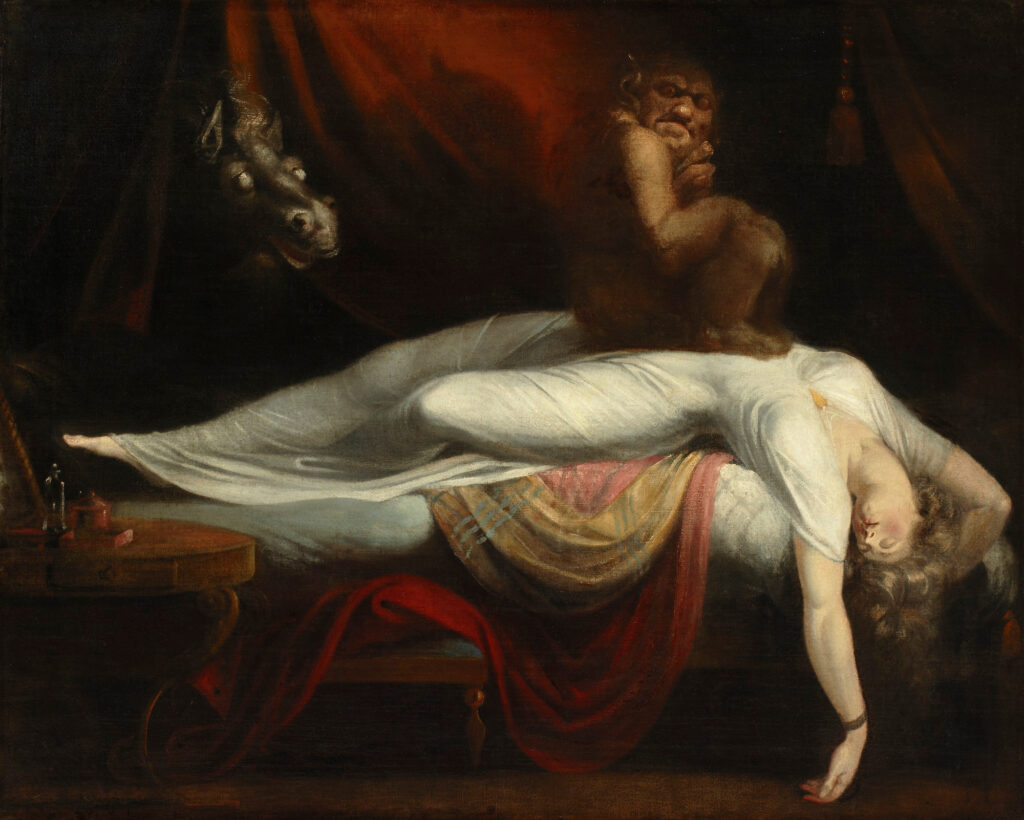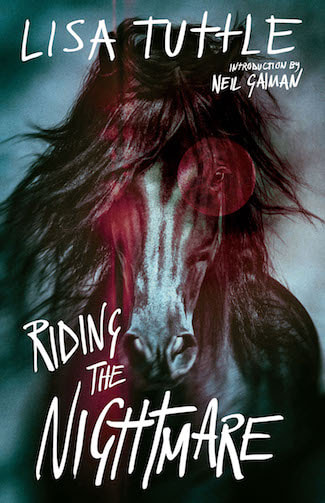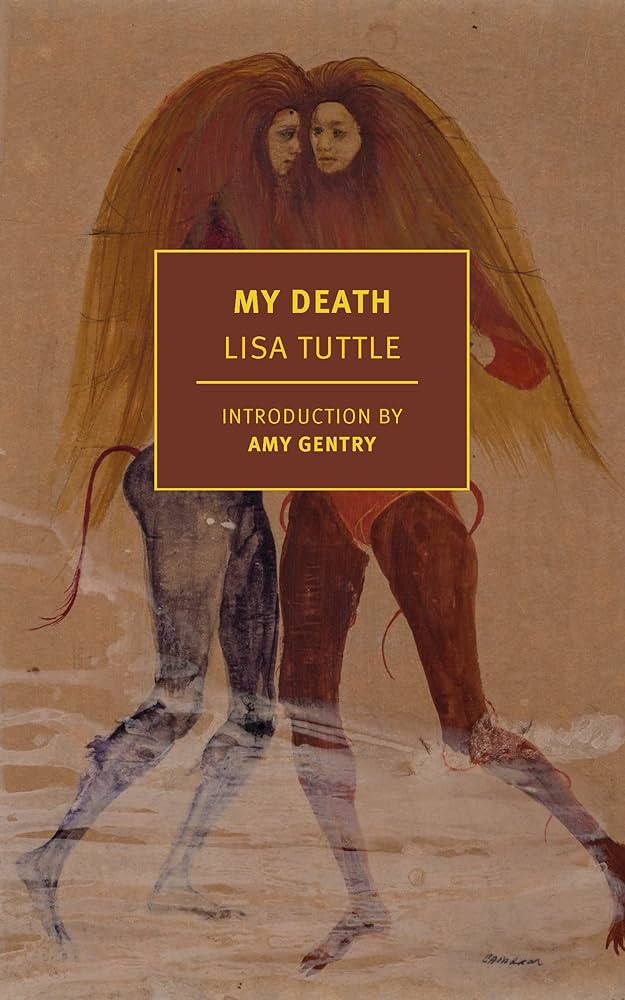Tales of Sex and Death | In Celebration of Lisa Tuttle
Reviews
By Lisa Kröger
There’s a famous painting by Swiss artist Henry Fuseli called The Nightmare. Completed in 1781, it depicts a woman fainting off a bed, a gargoyle-like demon sitting viciously on her chest. A rich burgundy tapestry hangs in the background. From behind a curtain fold, a dark horse pushes its head out, surveying the scene.
The night mare has become the nightmare.

Don’t be fooled, though. Fuseli isn’t interested in a portrait of a shadowy hellscape. Rather, Fuseli’s works are infused with a sexual longing: the woman, draped in her gauzy nightgown, is posed in almost ecstatic repose. It’s the mixture of the dark with the sexual that captures audiences.
In modern horror, readers aren’t often presented with the overtly sexual. The past decades have been filled with supernatural serial killers, wielding the phallic knife, and humanity at its absolute worst. Horror is often one bloody slasher franchise after the other.
Lisa Tuttle is here to disrupt the modern horror story, reviving the genre with the unexpected. She plumbs the depths of the nightmares that cloud our subconscious, but like Fuseli, she finds the sensual sides of those nightmares.
In Tuttle’s stories life and death are not the two sides to the coin. Sex and death are. And the horror is what lies between. Over the course of her career, her fiction has explored that liminal space between what we as humans desire and what we have in front of us. It’s the disconnect between the imaginary world of the want and the physical banality of reality. It’s a place only few explore—because too often there lies reflections of the darkest parts of ourselves.

Tuttle directly summons Fuseli in the first (and titular) story of her newest collection, Riding the Nightmare (Valancourt Books, 2023). The story is set in suburban New Orleans, where the heat and humidity of the deep South add to the sexually-charged events. The main character is in love with a married man; in fact, she’s in an open relationship with him. But everything gets complicated when his wife becomes pregnant. That’s when the nightmares begin to plague the narrator. She describes the demonic horse of her dreams as something frightful and disturbing, but at the same time, the attraction she feels for the creature of the night is both passionate and sexual too. She’s haunted by the feeling of the strong animal’s muscles between her thighs as she rides it after it comes to her at night, and though she knows nothing but pain comes from it, she is addicted to the night mare’s pull.
This blurring of the real world and dark underbelly of the imaginary is a hallmark of Tuttle’s fiction. Her writing is altogether modern, yet it often has a fairy tale-like, almost mythological, quality to it. In his introduction to this collection, Neil Gaiman compares her to fellow writer Robert Aickman and his “strange stories.”
Those “strange” stories excel when Tuttle focuses on human relationships. She writes about all kinds of relationships between men and women. Open ones. Monogamous ones. Cheaters. Casual sex. Betrayal. Passionate love affairs. Rape. (“Frightened by his strength, seeing no choice at all, she gave in.”) Women faking orgasms just to get “it” over with. In Tuttle’s world of words, descriptions of sex mingle with the horrific. But the horror is rarely gory. Somehow, the sex feels more visceral, while the horror remains almost mundane. Tuttle’s work is as close to magical realism as “horror” can get.
The twelve fictions (including one novella) in Riding the Nightmare focus on rather average narrators who find themselves in situations that are anything but average. In fact, they are downright unsettling, even more so when considering that many of these stories end in some kind of nightmarish liminal space, leaving the reader—and often the characters—wondering if there is even a return from the dark chasm they’ve wandered into.
Riding the Nightmare proves that Tuttle is the rare writer who truly has a pulse on her own literary heritage. “Mezzotint” is a retelling of the M.R. James’s story of the same name, and it’s just as haunting and dread-inducing as the original. In “After the End,” Tuttle channels Poe with a “new” tale about C. Auguste Dupin, the detective made famous by stories like “Murders in the Rue Morgue” and “The Purloined Letter.” I would even go as far as to argue that Tuttle is better than the writers she alludes to, if only for her ability to truly drill into the complexities of human relationships.
Throughout this collection, Tuttle’s protagonists struggle to navigate the world of adult relationships, whether wading through love affairs that are doomed to last or experiencing the white-hot, flesh-searing passion that comes with new lust. They also live in the world of consuming and numbing loneliness, and with that, the feeling of loss that accompanies the desire for that which is absent.
In delving so deeply into the human condition (which, for Tuttle, seems to be a desire for genuine connection), it’s no surprise that the true horror lies in disconnection. So many of these stories begin with longing and loneliness, only for the characters to find themselves lost (or even trapped) in a mysterious void-like space.
People trapped in the liminal spaces are ripe for metaphor in horror stories like these. In “Voices in the Night,” a woman raised in the country finds herself out of place in the city, where she’s moved for work. When she begins to hear mysterious voices, she follows them to what can only be described as a waiting room for the dead. Is there a more apt metaphor for a life lived for work, devoid of pleasure? In “The Hungry Hotel,” another woman remembers a short-lived but passionate love affair from her youth. She was a young girl, about to get married, and he was a traveling musician. He became famous, and she became a mother. Memory is perhaps the most dangerous liminal space of all. A person can get lost in memory all too easily.
In “A Home in the Sky,” Tuttle’s talent shines. This is truly one of her best “strange stories.” The main character, Cara, is a single, working woman, longing to make a home for herself. A rather ordinary walk on an ordinary day leads her to the most unusual place—a house in the sky. Surprisingly, it is for sale, advertised as a “beautiful, modern detached home” that’s perfect for Cara, if not a bit overpriced for its size. It’s a charming story, full of Tuttle’s tongue-in-cheek humor and ability to make magic seem plausible in the real world. But, like all of these stories, it quickly turns dark. What follows is an uncanny nightmare for Cara.
The collection ends with a novella, “The Dragon’s Bride.” In it, a young woman finds a mysterious (and somehow alive) dragon ring. There’s a mystery at the heart of this tale: the narrator can’t recall parts of her childhood spent with her witchy aunt in England, and a black notebook contains details about a woman sacrificed to be the bride of the dragon. The story only becomes more twisted and macabre once the narrator’s aunt dies mysteriously and she returns to England for the funeral. Novellas are notoriously difficult to write well, but for Tuttle, they seem to sing on the page. Perhaps the only fault in “The Dragon’s Bride” is that it ends far too soon. Readers will want to stay in the magical world created within the pages for longer than Tuttle allows. She shows us the possibilities in the world, ones of real magic and danger and power, and then shuts the door as quickly as she opened it.
Lisa Tuttle is far from a household name, despite a long and decorated career in genre. She was born and raised in Texas, but she’s spent much of her adult life in England and now Scotland. Her publishing career began with the short story “Stranger in the House” in 1972. By 1974, she won the John W. Campbell Award for Best New Writer. And her first novel Windhaven (written with George R. R. Martin) was nominated for a Locus Award in 1981. That novel was based on a novella the two had written a few years earlier called The Storms of Windhaven, which was nominated for both a Hugo and a Nebula (it won the 1976 Locus for Best Novella). Martin, of course, would later find fame with his Game of Thrones universe, while Tuttle kept adding to her catalogue.
In 1982, Tuttle won the Nebula Award for Best Short Story for her story “The Bone Flute,” an award she refused, due to a fellow nominee’s behavior (he sent out free copies of his story in hopes of gaining votes). The Science Fiction and Fantasy Writers Association, who host the awards each year, refused to recognize her refusal, giving her the award in her absence.
Over the following decades, Tuttle continued to write, and her bibliography grew to include numerous novels and novellas, including media tie-ins, a children’s book series, young adult books, short story collections and a few works of nonfiction, including books on literary houses, one of which she wrote with Rosalind Ashe, a writer of gothic horror romances perhaps best known for her 1976 novel Moths, in which a nymphomaniac ghost possesses the body of a beautiful young wife. One of Tuttle’s most recent collections The Dead Hours of Night (published by Valancourt as part of the Monster, She Wrote series) was nominated for a Bram Stoker Award.

Another of Tuttle’s other novellas, My Death, originally published in 2004, will be reprinted this month by NYBR Classics, with a new introduction by Amy Gentry. In it, a writer struggles to write following the death of her husband. Drowning in grief and losing all sense of her creative self, she decides to leave fiction behind and write nonfiction. Specifically, a biography of a woman who was once the model for a famous painting of Circe. As it turns out, the woman is still alive, although she’s now in her 90s. A series of interviews reveal just how intertwined the women’s lives are. Again, sex and relationships (and creativity) are at the forefront of this story.
The reference to Circe is telling. In Greek mythology, Circe is a goddess, a witch, a predatory woman who is sexually voracious and willing to go after what she wants, even if that means taking out her competition. She uses her knowledge of magic, spells, and herbal tinctures to turn men into pigs and her sexual rivals into monsters. She exists firmly outside of the traditional roles made available to women. Circe isn’t the nurturing mother. She isn’t the virtuous wife. She isn’t even the whore in the madonna/whore dichotomy, even though some tales would later cast her as the prostitute. She’s something else: entirely self-possessed and comfortable with her power as well her ambition.
Of course, Circe has long been vilified, although there has been a recent push by authors like Madeline Miller to give more credence to her story. Now, Circe is a powerful heroine with her own epic stories, no longer simply a “trial” for someone like Odysseus to have to overcome on his way to glory. There’s a certain poetry in Tuttle’s focus on Circe as the mythological figure at the heart of My Death. It’s a poetry that exists at the heart of all her work: a woman who is everything. She is painted with sympathy. She is painted as vengeful. She is horror, a hero, and a villain too, but most refreshingly of all, she is sexually alive.
Lisa Kröger is author of Monster, She Wrote and Toil and Trouble, as well as co-host of Know Fear and Monster, She Wrote podcasts. She’s won the Stoker and the Locus awards for nonfiction, and a Rondo for Best Short Film. Lisa also works with Nyx Horror Collective, creating women-led genre content.
More Reviews


